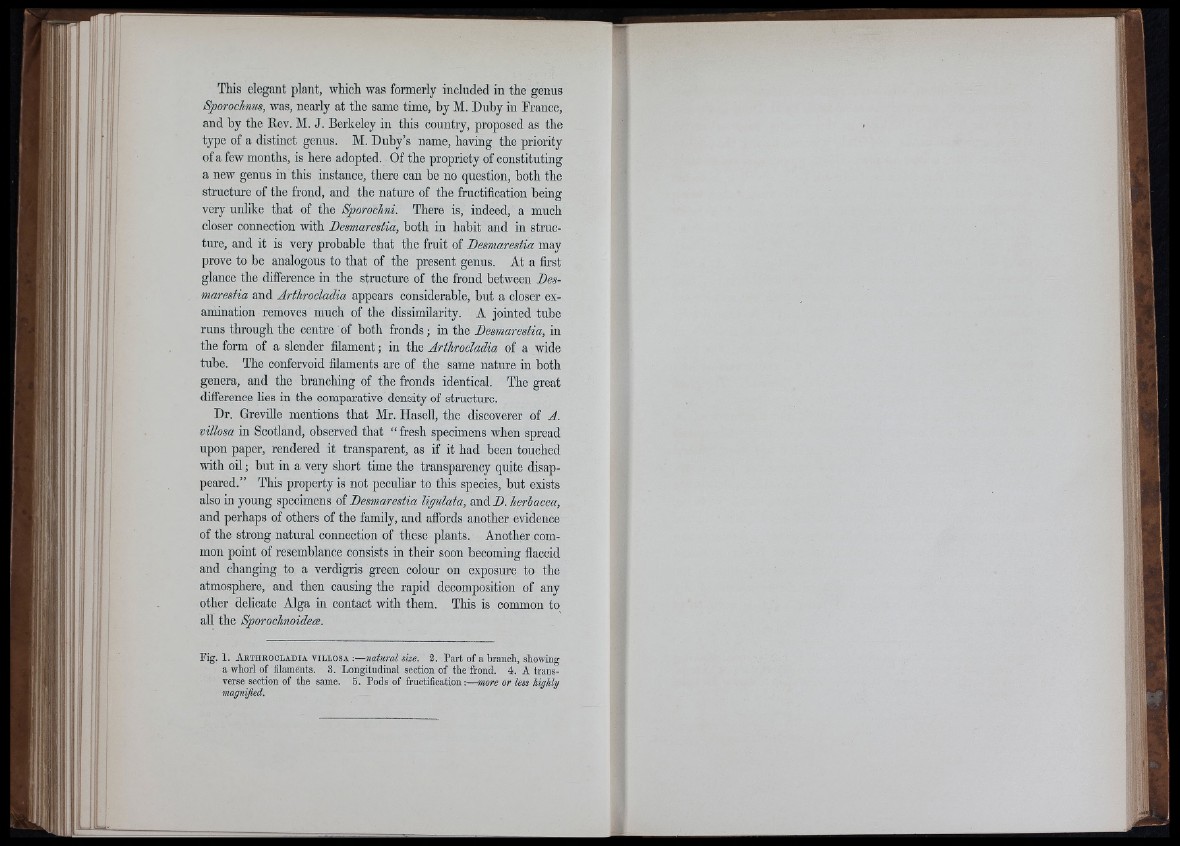
This elegant plant, which was formerly included in the genus
Sporochnus, was, nearly at the same time, by M. Duby in France,
and by the Rev. M. J. Berkeley in this country, proposed as the
type of a distinct genus. M. Duby’s name, having the priority
of a few months, is here adopted. Of the propriety of constituting
a new genus in this instance, there can be no question, both the
structure of the frond, and the nature of the fructification being
very unlike that of the Sporochni. There is, indeed, a much
closer connection with Desmarestia, both in habit and in structure,
and it is very probable that the fruit of Desmarestia may
prove to be analogous to that of the present genus. At a first
glance the difference in the structure of the frond between Desmarestia
and Arthroctadia appears considerable, but a closer examination
removes much of the dissimilarity. A jointed tube
runs through the centre of both fronds ; in the Desmarestia, in
the form of a slender filament ; in the Arthroctadia of a wide
tube. The confervoid filaments are of the same nature in both
genera, and the branching of the fronds identical. The great
difference lies in the comparative density of structure.
Dr. Greville mentions that Mr. Hasell, the discoverer of A.
vittosa in Scotland, observed that “ fresh specimens when spread
upon paper, rendered it transparent, as if it had been touched
with oil ; but in a very short time the transparency quite disappeared.”
This property is not peculiar to this species, hut exists
also in young specimens of Desmarestia tigutata, and D. herhacea,
and perhaps of others of the family, and affords another evidence
of the strong natural connection of these plants. Another common
point of resemblance consists in their soon becoming flaccid
and changing to a verdigris green colour on exposm-e to the
atmosphere, and then causing the rapid decomposition of any
other delicate Alga in contact with them. This is common to
all the Sporochnoideoe.
Fig. 1 . A e t h k o o l a d ia v il l o sa -.— natural size. 3. Part of a branch, showing
a whorl of filaments. 3. Longitudinal section of the frond. 4 . A transverse
section of the same. 5. Pods of fructification;— more or less highly
magnified.